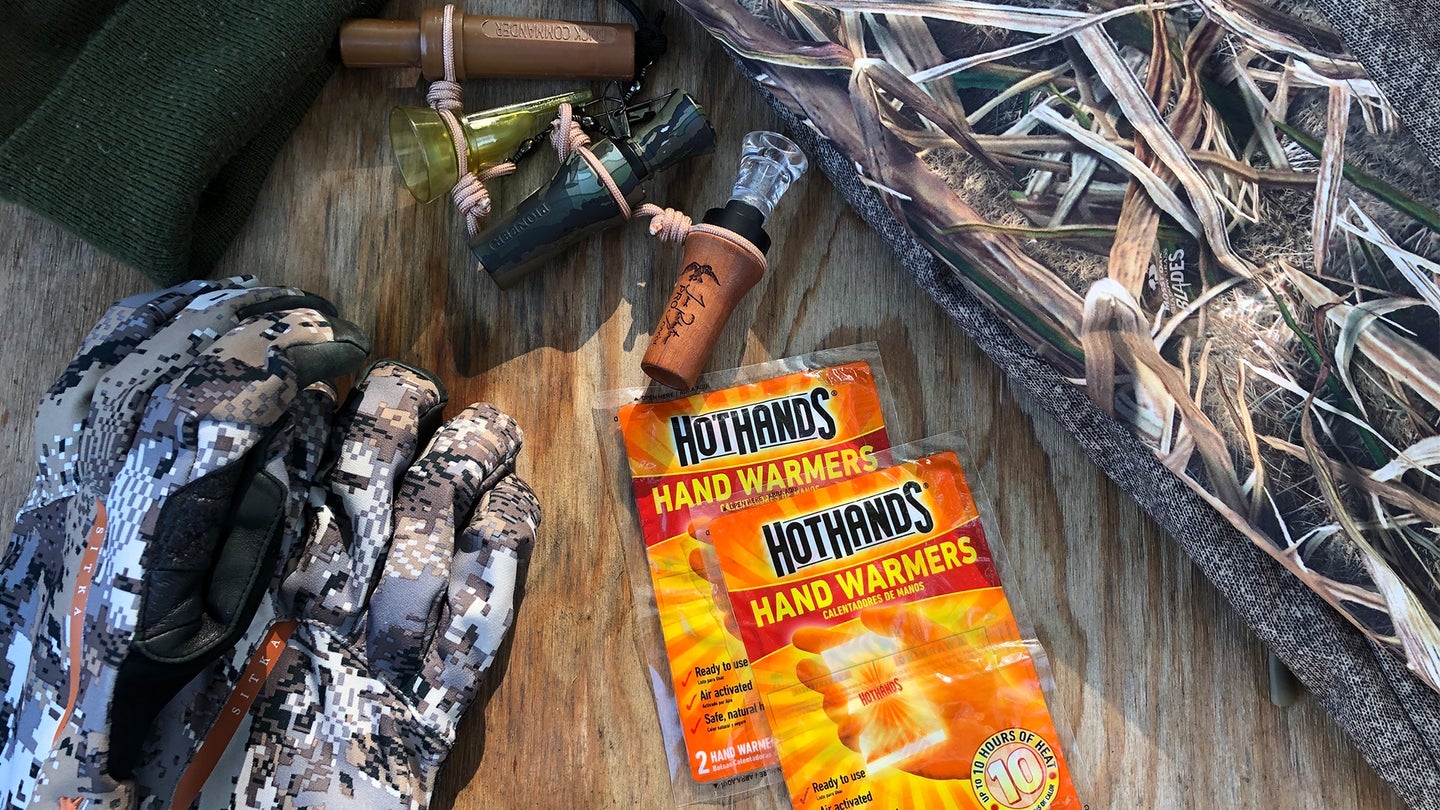How Do Hand Warmers Work?
Ever wondered how these magical packets do what they do? Here's the answer, plus how to make their heat last a little longer

We may earn revenue from the products available on this page and participate in affiliate programs. Learn more ›
If you’ve ever spent hours in a late-season deer stand or mid-winter ice shanty—or any place outside in bitter weather for an extended period—there’s a decent chance you’ve dug out a package of hand warmers, activated their contents, and then sat back enjoying their magical effect while wondering, Hmm, how do hand warmers work?
As modern humans, we’re lucky to have technology to help us ride out extreme weather, and that includes a varitey of hand warmers. Some are rechargeable or catalytic, but the most popular by far are the disposable ones you can find at any sporting-goods store, pharmacy, or supermarket. They’re cheap, widely available, and provide an instant charge of comfort and relief whenever we are outside and freezing our butts off. But how do hand warmers work? Well, oddly enough, handwarmers work through the same chemical reaction that creates rust. So, read on to learn more about the magic powder in these bad boys, as well as who invented them and how to make them last longer in an emergency.
Table of Contents
- How Do Hand Warmers Work?
- Who Invented Hand Warmers?
- Can You Make Hand Warmers Last Longer?
How Do Hand Warmers Work?
Modern hand warmers are air-activated, meaning they only start working once you open up the packet and oxygen can seep inside. Once that happens, the oxygen reacts with a fine iron powder. The resulting exothermic reaction is the same one that happens when metal turns to rust, but in this case, the process is sped up by the presence of chloride ions which act as a catalyst—and heat is produced.

Charcoal helps spread that heat evenly over the packet, because it’s thermally conductive. An absorbent material must also be present for the reaction to occur. Some brands use polymers like polyacrylate, or silicon-based minerals like vermiculite. Others use pulverized wood. All of these are natural materials, which means that you can throw a used hand warmer out in the garbage, or even take it on a plane. (Warning: The elemental iron is toxic to people or pets if swallowed, however, so be careful where you dispose of it.)
So, to recap how hand warmers work, the ingredients inside are: powdered iron, chloride ions (also known as salts), charcoal, and some sort of absorbent material. Together, when exposed to oxygen, they trigger an exothermic reaction that releases heat of about 135 degrees Fahrenheit. That’s the perfect temperature to protect against frostbite without getting too hot inside your gloves or boots. Unopened, the hand warmers have a shelf-life of about 4 years.
Who Invented Hand Warmers?
People have been using some version of hand warmers for centuries. The Romans, for instance, wore long sleeves of fur in the winter. During the Ming Dynasty, the Chinese would fill copper vessels with glowing pieces of charcoal. The Japanese innovated using hot stones, and then portable packets filled with hot ash. That said, the version of hand warmers that we use today was first patented by a New Jersey man named Jonathan Ellis, in 1891.
Ellis never took his invention to market, though. That distinction belongs to a Japanese man named Niichi Matoba, who started selling hand warmers in the 1920s, and currently holds the patent for the oxidation process that makes today’s hand warmers work.
Hot Hands, the most recognizable brand of disposable handwarmers in America—and Field & Steam’s best budget hand warmer of 2023—didn’t come out until 1989. They were the brainchild of two South Korean immigrants, who later entrusted the business to their son. Their company is now run by a Japanese conglomerate.
Can You Make Hand Warmers Last Longer?

Once activated, hand warmers can last between 7 and 24 hours, depending on the brand and the quality of the materials inside. But there’s usually a trade-off between how quickly they generate heat, and for what length of time. Some companies add more iron to their proprietary blend—the idea being that with more surface area for the oxygen to react to, the greater the reaction. Generally speaking, one gram of iron releases 1.7 kilocalories of heat.
But what about a consumer looking to make their purchase go a little further? When you’re done for the day, put your hand warmer in an air-tight bag, like a Ziploc. Because of how hand warmers work, by cutting off the oxygen supply to the pouch, the iron will stop reacting, allowing you to save the rest for later. When you take it out again, the oxidation process will start back up. Conversely, you can shake the packet to make it heat up faster, but it will likely not last as long.
